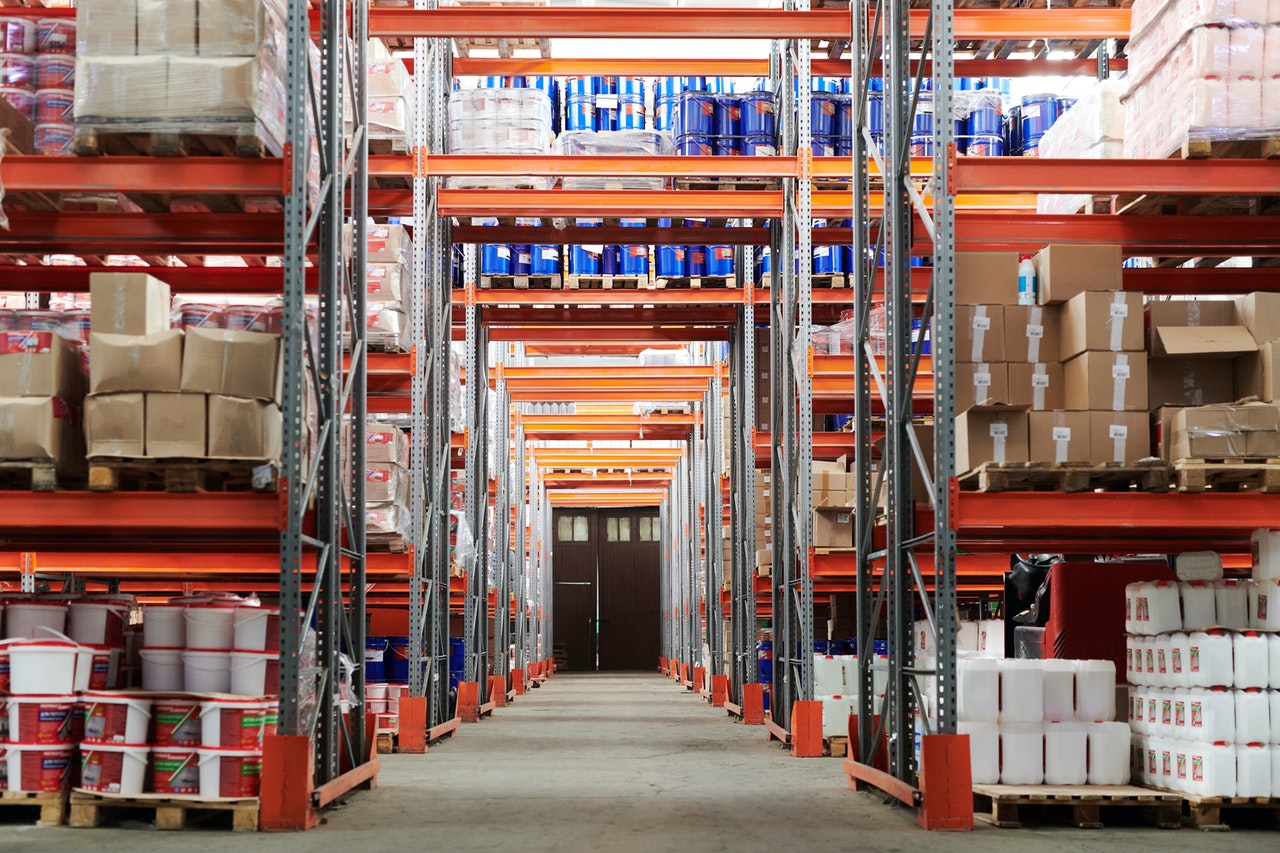If you want to modernise your warehouse storage solutions, you should begin with your racks and shelves. However, although improving your shelves and racks might result in some significant advantages in terms of space use, it is far from your sole choice. A variety of automated methods may result in even larger benefits while adding the capability to your company.

Types of Warehouse Storage Solutions
Since there are so many types of warehouse solutions on the market today, it’s critical to familiarise yourself with the possibilities before being sold on one that won’t compliment your layout or meet your demand for flexibility.
Here is a list of the most common types of warehouse storage solutions to assist you in selecting one that is appropriate for your business.
Traditional Shelving
Shelving is one of the most classic kinds of warehouse storage, and it is what most people think of when they consider storage choices.
Shelving may be either mobile or static.
Static shelving is intended to remain in one location, often where it was erected. Static shelving, by definition, resulted in fixed aisles. On the other hand, mobile shelving is intended to be moved. They are often installed on a carriage and wheel arrangement. Fixed aisles may be reduced or eliminated by using mobile shelving, allowing for denser storage. Each style of shelving serves a certain purpose in a given process.
Multi-tier Racking
The multi-tier racking system is best suited for medium to large warehouses with enough vertical space. It is built with several stages where stock may be manually accessible up to the maximum upper limit of warehouses. However, in order to correctly store the units and make room for additional objects, you must carefully arrange each layer.
The finest feature of a multi-tier racking system is its versatility, which enables you to add or remove levels based on your storage needs. Simultaneously, you must follow the weight limitations and rack-height compliance recommendations to prevent any disasters.
Wire Partitions
Wire partitions are simply wired cages that are used to store merchandise in operation. They are generally fast to install (and remove), making them a fantastic alternative when time is of the essence. Because of the nature of these cages, wire partitions are often employed to store large or unusually shaped items like tyres or balls. They are not usually a suitable choice for really delicate products.
Wire barriers may also be used to store objects that need more protection than just being put on a shelf.
Pallet Racking Systems
As the name indicates, a pallet racking system holds stocks on pallet racks consisting of wood, plastic, or metal. This method is appropriate for the largest and busiest warehouses and supermarket shops that receive huge storage boxes. Depending on the height of the racks, these boxes are positioned using an automated system or a forklift. If you want to put pallet racking in your facility, you must consider many factors, including your budget, the size of the pallets, the height of the ceiling, and the size of the storage facility.
Coil-racking, push-back racking, narrow aisle racking, pallet live racking, high-bay racking, vertical racking, drive-through racking, and more subcategories are all supported by this system.
Many warehouse operators choose one of these subcategories depending on infrastructure, flexibility, and storage unit weight. It is also the most efficient and cost-effective storage choice since it allows you to store diverse stocks in a framework that allows for quick access without holding any possible failures.
Mezzanines
A mezzanine is an extra level of warehouse space placed into your business. Building a mezzanine is similar to adding a second (or third, etc.) level within your warehouse, increasing the amount of valuable space you may utilise for storage and other operations.
Adding a mezzanine to your property might be an expensive operation. Nonetheless, it is frequently less costly than new construction and enables you to reclaim unused vertical space in your organisation.
Understanding The Warehouse Storage Solutions Alternatives
You may take several pathways to improve the efficiency of your warehouse storage, ranging from standard methods to more modern, automated choices like AS/RS.
However, before proceeding with a storage solution, you must choose the appropriate alternative. Which warehouse solution is best for you will be determined by your objectives, the size of your facility, the available floor space, vertical height, throughput needs, and the particular features of your inventory.
Conclusion
It is critical to understand the warehouse’s needs before selecting among many kinds of warehouse storage solutions. Some storage methods are best suited for warehouses that primarily store huge packages, while others are better suited for warehouses that want to optimise their space. Because each method has its own merits, warehouses may experiment with combining them — especially if their handling inventory involves a variety of SKUs.